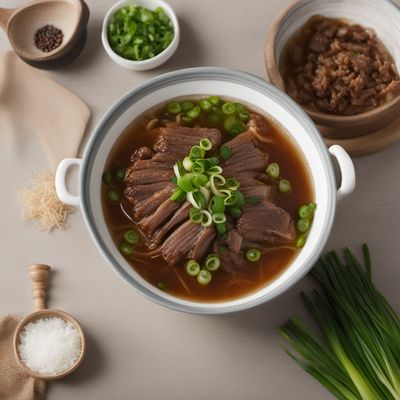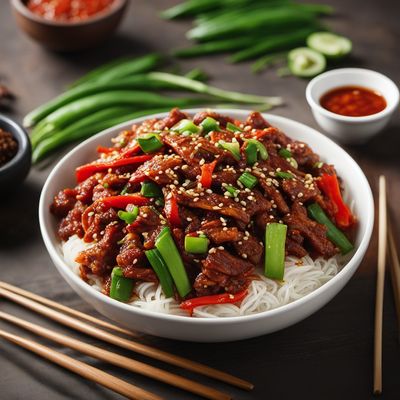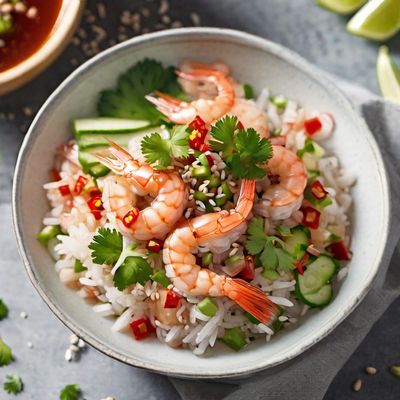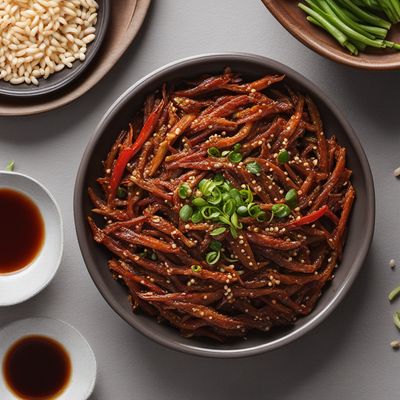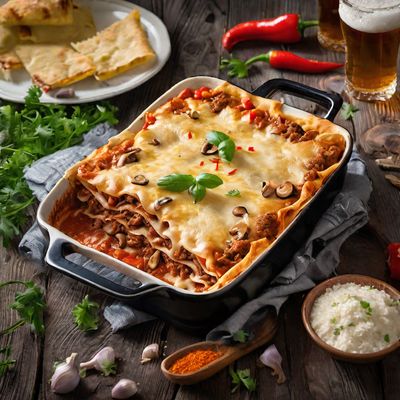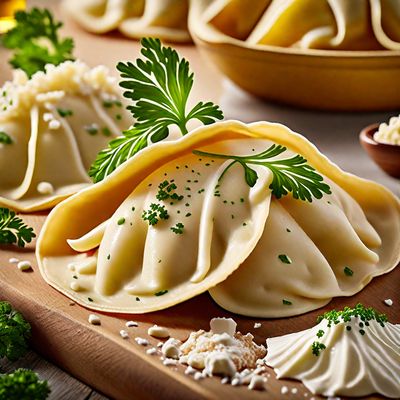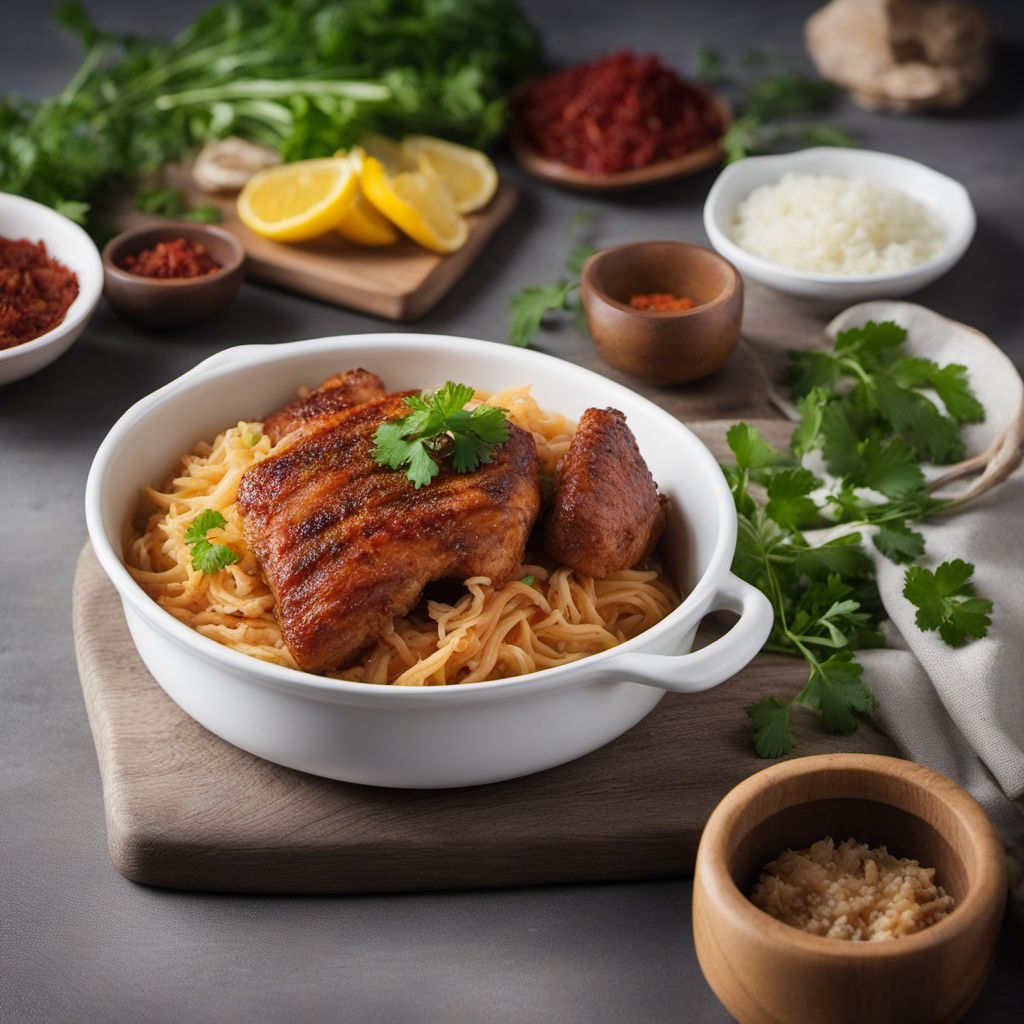
Recipe
Bavarian-style Gamjatang
Hearty Bavarian Potato Stew with a Korean Twist
4.5 out of 5
Indulge in the fusion of Korean and Bavarian flavors with this Bavarian-style Gamjatang recipe. This hearty potato stew combines the rich and comforting elements of Bavarian cuisine with the bold and spicy flavors of Korean cuisine.
Metadata
Preparation time
20 minutes
Cooking time
40 minutes
Total time
60 minutes
Yields
4 servings
Preparation difficulty
Medium
Suitable for
Omnivore, Low carb, High protein, Dairy-free, Gluten-free
Allergens
Pork, Sausage
Not suitable for
Vegetarian, Vegan, Paleo, Keto, Nut-free
Ingredients
In this Bavarian-style adaptation of Gamjatang, we incorporate Bavarian ingredients and flavors to give the dish a distinct twist. The original Korean Gamjatang typically uses gochujang (Korean chili paste) for spiciness, but in this recipe, we substitute it with a combination of smoked paprika and cayenne pepper to infuse the stew with a smoky flavor. Additionally, we incorporate Bavarian sausage and sauerkraut to enhance the richness and tanginess of the dish. We alse have the original recipe for Gamjatang, so you can check it out.
-
1 kg (2.2 lbs) potatoes, peeled and cubed 1 kg (2.2 lbs) potatoes, peeled and cubed
-
500g (1.1 lbs) pork shoulder, cut into chunks 500g (1.1 lbs) pork shoulder, cut into chunks
-
200g (7 oz) Bavarian sausage, sliced 200g (7 oz) Bavarian sausage, sliced
-
1 cup sauerkraut 1 cup sauerkraut
-
1 onion, chopped 1 onion, chopped
-
4 cloves garlic, minced 4 cloves garlic, minced
-
2 tablespoons vegetable oil 2 tablespoons vegetable oil
-
2 tablespoons smoked paprika 2 tablespoons smoked paprika
-
1 teaspoon cayenne pepper 1 teaspoon cayenne pepper
-
1 teaspoon caraway seeds 1 teaspoon caraway seeds
-
1 teaspoon salt 1 teaspoon salt
-
1/2 teaspoon black pepper 1/2 teaspoon black pepper
-
4 cups (950ml) chicken broth 4 cups (950ml) chicken broth
-
2 cups (470ml) water 2 cups (470ml) water
-
Fresh parsley, for garnish Fresh parsley, for garnish
Nutrition
- Calories (kcal / KJ): 450 kcal / 1884 KJ
- Fat (total, saturated): 25g, 8g
- Carbohydrates (total, sugars): 35g, 5g
- Protein: 25g
- Fiber: 6g
- Salt: 2g
Preparation
-
1.Heat the vegetable oil in a large pot over medium heat. Add the onions and garlic, and sauté until fragrant.
-
2.Add the pork shoulder and Bavarian sausage to the pot, and cook until browned.
-
3.Stir in the smoked paprika, cayenne pepper, caraway seeds, salt, and black pepper, coating the meat evenly.
-
4.Add the potatoes, sauerkraut, chicken broth, and water to the pot. Bring to a boil, then reduce the heat to low and simmer for about 30 minutes, or until the potatoes are tender.
-
5.Serve the Bavarian-style Gamjatang hot, garnished with fresh parsley.
Treat your ingredients with care...
- Potatoes — Make sure to cut the potatoes into evenly sized cubes to ensure they cook uniformly.
- Bavarian sausage — Choose a smoky and flavorful Bavarian sausage, such as bratwurst or weisswurst, to enhance the taste of the stew.
- Smoked paprika — Opt for high-quality smoked paprika to achieve a rich and smoky flavor in the dish.
- Sauerkraut — Rinse the sauerkraut before adding it to the stew to reduce its tanginess if desired.
- Caraway seeds — Toast the caraway seeds in a dry pan before adding them to the stew to enhance their aroma.
Tips & Tricks
- For a spicier version, increase the amount of cayenne pepper according to your preference.
- Serve the Bavarian-style Gamjatang with crusty bread or pretzels to soak up the flavorful broth.
- Adjust the thickness of the stew by adding more water or broth if desired.
- This dish tastes even better the next day as the flavors meld together, so consider making it in advance.
- Feel free to add other vegetables like carrots or mushrooms to customize the stew to your liking.
Serving advice
Serve the Bavarian-style Gamjatang in deep bowls, allowing the guests to enjoy the rich broth and tender potatoes. Provide spoons for savoring every delicious bite.
Presentation advice
Garnish the Bavarian-style Gamjatang with a sprinkle of fresh parsley to add a pop of color to the dish. Serve it in rustic bowls or traditional Bavarian-style ceramic pots for an authentic presentation.
More recipes...
For Korean cuisine » Browse all
More Korean cuisine dishes » Browse all

Manduguk
Dumpling soup
Manduguk is a traditional Korean soup made with dumplings and beef broth.

Jumulleok
Jumulleok is a traditional Korean dish that is made with marinated beef that is grilled on skewers. The beef is typically marinated in a mixture...
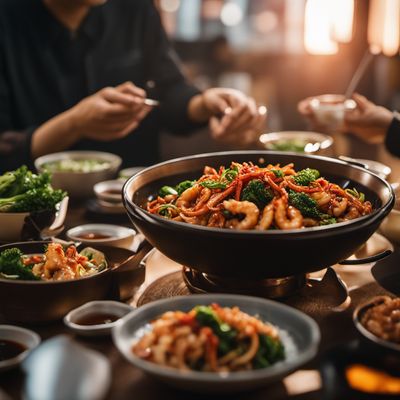
Ojingeo chae bokkeum
Spicy Squid Stir-Fry
Ojingeo chae bokkeum is a Korean stir-fry dish that is made with squid and vegetables. It is a popular dish in Korean cuisine.

